Crocodiles are some of the largest and most fearsome predators on the planet, capable of taking down prey many times their size. These prehistoric-looking creatures have fascinated people for centuries, with many individuals wondering just how big they can get.
In this article, we will explore the top 8 largest crocodiles ever recorded. From massive prehistoric crocodiles to their lesser-known relatives, we will delve into the world of these ancient reptiles and discover what makes them such formidable creatures.
You are reading: Top 8 Largest Crocodiles Ever
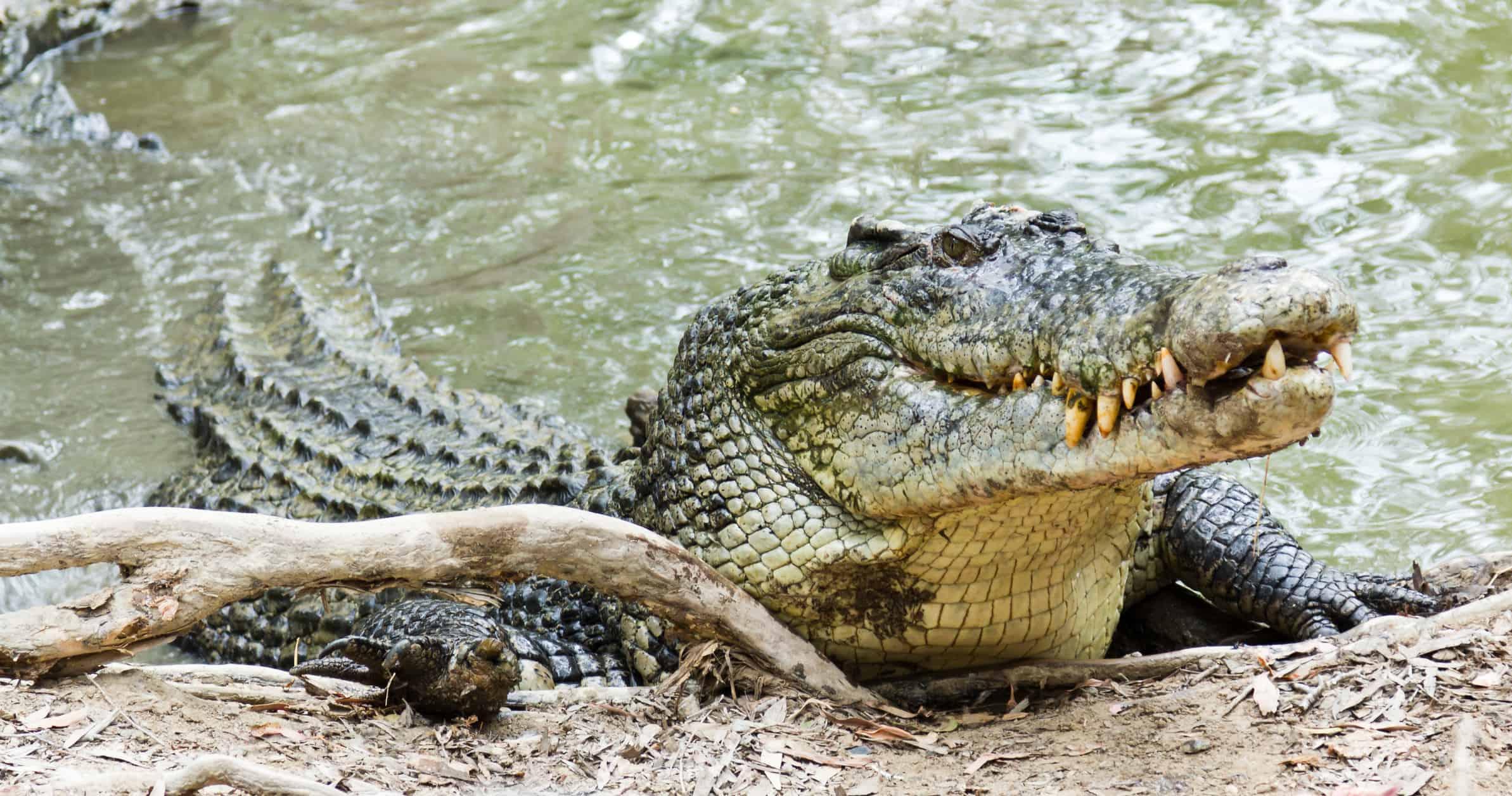
Top 8 Largest Crocodiles Ever
Sarcosuchus imperator
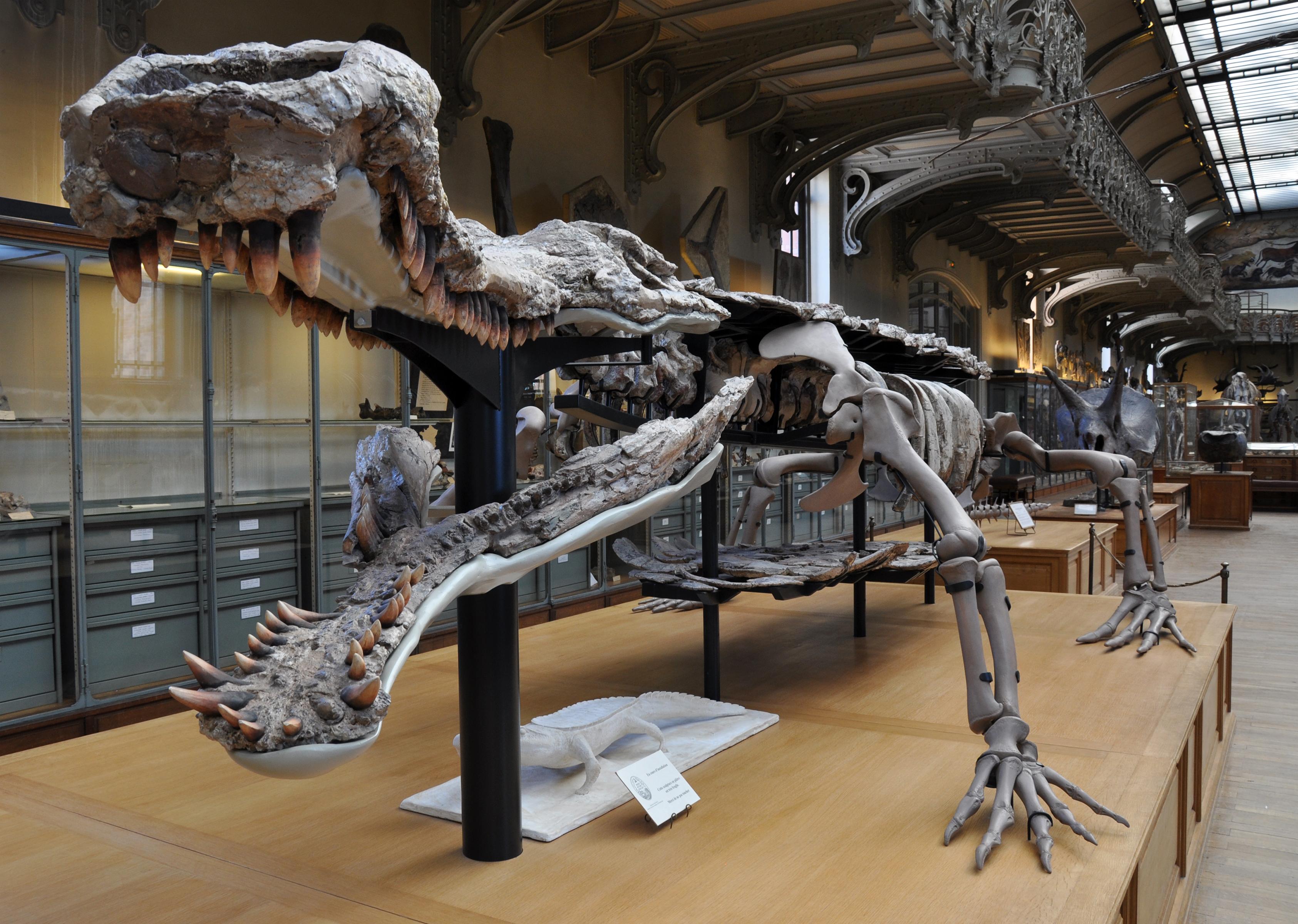
Sarcosuchus imperator, also known as the “flesh crocodile emperor,” was one of the largest crocodiles to have ever lived on Earth. It lived during the Early Cretaceous Period, approximately 110 million years ago, in what is now the Ténéré Desert in central Niger.
The largest S. imperator specimen was estimated to be 9.5 meters (31.2 feet) long and weighed up to 3.45-4.3 metric tons (3.80-4.74 short tons) . Sarcosuchus was a top predator in the African river system and was capable of eating large dinosaurs that came within range of its powerful jaws.
It had an expansion at the end of its snout known as a bulla, which is present in all Sarcosuchus skulls found so far, suggesting that it was not a sexually dimorphic trait. The purpose of this structure is not known.
Rhamphosuchus crassidens
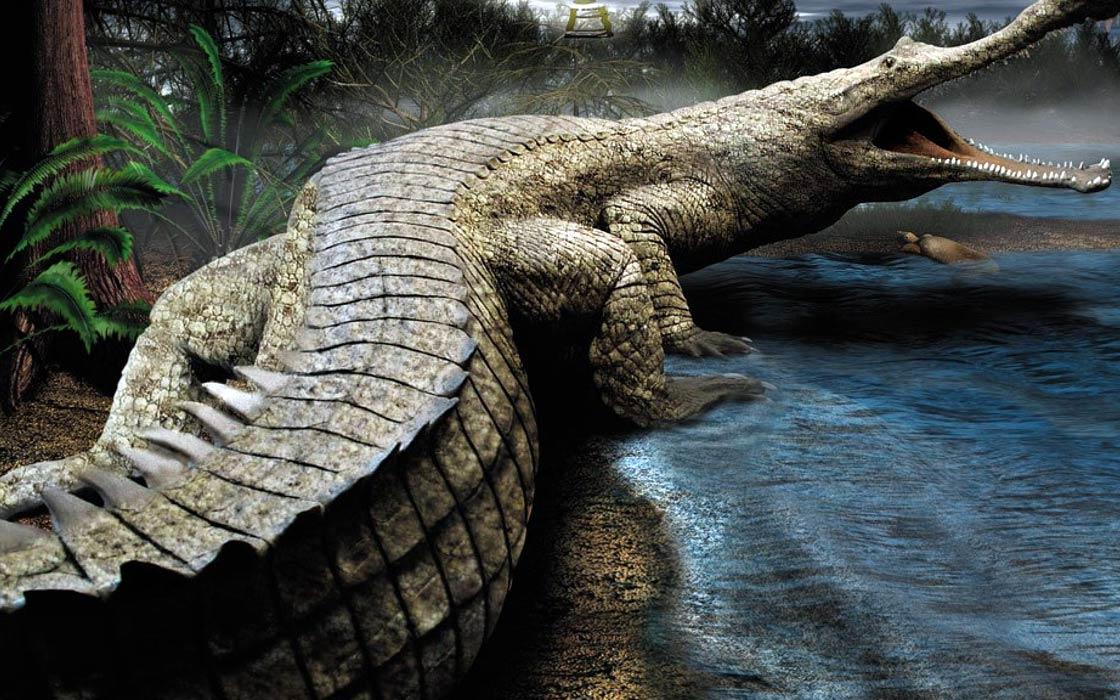
Rhamphosuchus crassidens, also known as the “beak crocodile,” was an extinct genus of gavialid crocodylians that lived during the Pliocene, approximately 5-2 million years ago, in what is now the Indian subcontinent.
– Diet: Carnivore
– Size: 8 to 11 meters (26 to 36 feet) long
– Habitat: Semi-aquatic, lived in freshwater environments
– Fossils: Mostly teeth and skulls
– Related to: Modern-day false gharial
Rhamphosuchus crassidens was a massive crocodile, closely related to the modern-day gharial. It had a long, narrow snout with numerous sharp teeth, which it used to catch fish and other aquatic prey.
Its fossils are mostly teeth and skulls, which suggest that it was a semi-aquatic crocodile that lived in freshwater environments. While it was not the largest crocodile to have ever lived, it was still an impressive predator that would have been feared by many animals in its habitat.
Deinosuchus
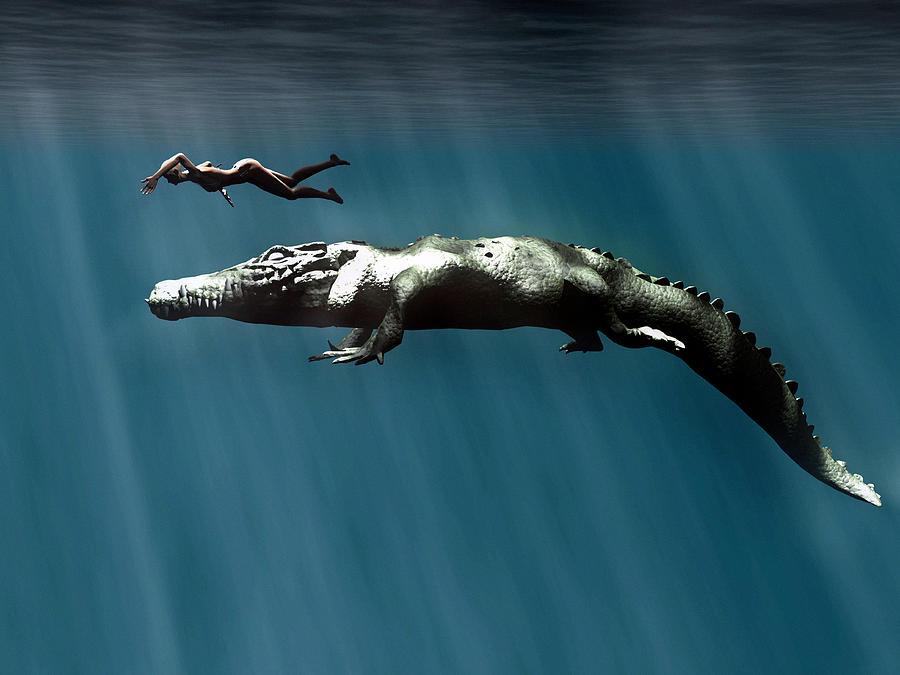
Deinosuchus was a genus of alligatoroid crocodilian that lived during the late Cretaceous period, approximately 82 to 73 million years ago.
– Name: Deinosuchus (meaning “terrible crocodile” in Greek)
– Size: Up to 35 feet long
– Habitat: Freshwater environments in North America
– Diet: Carnivorous, preyed on dinosaurs and other large animals
– Fossils: First discovered in North Carolina in the 1850s
– Other facts: Deinosuchus had a large, powerful jaw with teeth that were up to six inches long. It was one of the largest crocodilians to have ever lived, and was a top predator in its ecosystem.
Read more : Discover The 3 Types Of Rattlesnakes In Georgia
Deinosuchus was a formidable predator that would have been feared by many animals in its habitat. Its fossils have been found in various locations across North America, including Texas, Montana, and New Jersey.
Despite its fearsome reputation, Deinosuchus went extinct along with the dinosaurs at the end of the Cretaceous period.
Purussaurus brasiliensis
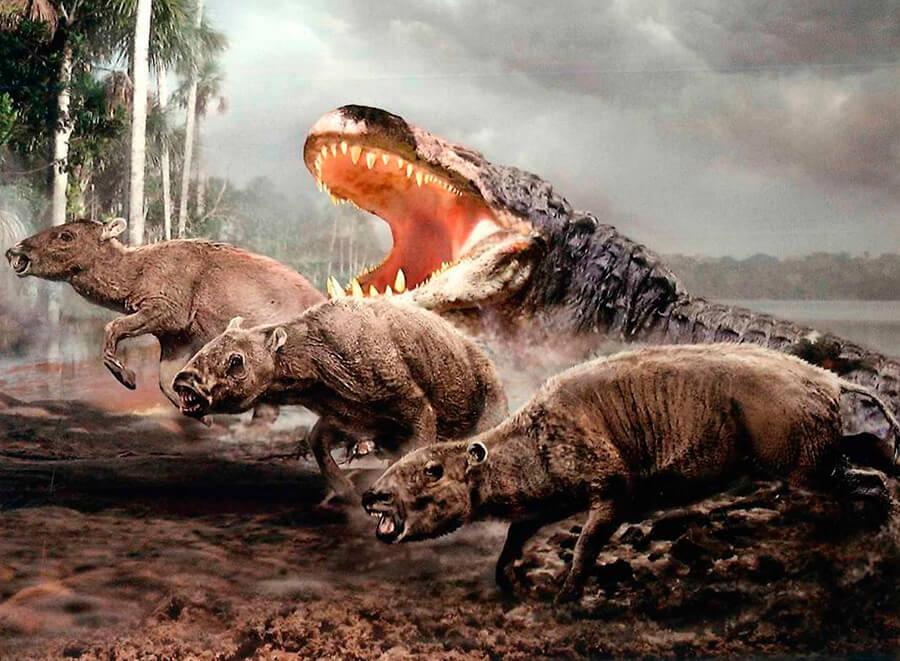
Purussaurus brasiliensis was a giant caiman that lived in South America during the Miocene epoch, from the Friasian to the Huayquerian in the SALMA classification.
– Name: Purussaurus (meaning “Purus lizard” in reference to the Purus River in Brazil)
– Size: Estimated to have reached about 10.3 meters (34 feet) in length and weighed about 5.16 metric tons (5.69 short tons)
– Habitat: Freshwater environments in South America
– Diet: Carnivorous, preyed on large animals such as turtles, fish, and other crocodilians
– Fossils: Skull material found in Brazil, Peru, Colombia, Panama, and Venezuela
Purussaurus brasiliensis was one of the largest crocodilians to have ever lived, with a skull length of up to 1.4 meters (4.6 feet). Its heavily armored body and powerful jaws made it a formidable predator in its habitat.
Despite its fearsome reputation, Purussaurus brasiliensis went extinct millions of years ago, and its fossils provide valuable insights into the prehistoric fauna of South America.
Gryposuchus croizati
Gryposuchus croizati is an extinct species of gavialoid crocodilian that lived during the Miocene epoch, approximately 23 to 5.3 million years ago.
– Name: Gryposuchus (meaning “hooked crocodile” in Greek)
– Size: Up to 10 meters (33 feet) long
– Habitat: Freshwater environments in South America
– Diet: Carnivorous, preyed on fish and other aquatic animals
– Fossils: Found in the Upper Miocene Urumaco Formation in Venezuela
Gryposuchus croizati is the largest known species of gharial, a type of crocodilian that is closely related to modern-day gharials. Its fossils have been found in the Upper Miocene Urumaco Formation in Venezuela, and it is known to have lived in freshwater environments, where it preyed on fish and other aquatic animals.
Despite its fearsome size, Gryposuchus croizati went extinct millions of years ago, and its fossils provide valuable insights into the prehistoric fauna of South America.
Sarcosuchus hartti
Sarcosuchus hartti is a species of prehistoric crocodile that lived during the Early Cretaceous period, approximately 95 to 115 million years ago.
– Name: Sarcosuchus hartti (named after American naturalist Charles Hartt)
– Size: Estimated to have been about 9 to 11 meters (30 to 36 feet) long
– Habitat: Lived in a shallow lacustrine ecosystem in the Recôncavo Basin of Brazil
– Diet: Carnivorous, likely preyed on fish and other aquatic animals
Read more : Top 10 Animals With Masks Around Their Eyes
– Fossils: Found in the late Hauterivian pebbly conglomerates and green shales belonging to the Ilhas Group in the Recôncavo Basin of north-eastern Brazil
Sarcosuchus hartti was a top predator in its ecosystem, inhabiting the fluvial and coastal areas of north-eastern Brazil during the Early Cretaceous period. Its fossils have been found in the Recôncavo Basin of Brazil, where it likely lived in a shallow lacustrine ecosystem and preyed on fish and other aquatic animals.
Despite its fearsome size and predatory nature, Sarcosuchus hartti went extinct millions of years ago, and its fossils provide valuable insights into the prehistoric fauna of South America.
Euthecodon brumpti
Euthecodon brumpti is an extinct species of long-snouted crocodyline crocodilian that was common throughout much of Africa during the Neogene, from the Miocene through the Pleistocene.
– Name: Euthecodon brumpti (named after French parasitologist Émile Brumpt)
– Size: Up to 4 meters (13 feet) long
– Habitat: Lived in Africa during the Neogene
– Diet: Carnivorous, likely preyed on fish and other aquatic animals
– Fossils: Found in the Turkana Basin in Kenya and other locations in Africa
Euthecodon brumpti was one of the most common crocodiles in the Turkana Basin in Kenya, along with crocodiles referred to Rimasuchus lloydi. Its fossils have also been found in other locations in Africa.
Despite its once-common presence, Euthecodon brumpti is now extinct. It was a carnivorous crocodile that likely preyed on fish and other aquatic animals, and its fossils provide valuable insights into the prehistoric fauna of Africa.
Crocodylus thorbjarnarsoni
Crocodylus thorbjarnarsoni is an extinct species of crocodile that lived during the Pliocene and Pleistocene epochs of the Turkana Basin in Kenya.
– Name: Crocodylus thorbjarnarsoni (named after John Bjorn Thorbjarnarson, a conservationist who worked to protect endangered crocodilians)
– Size: Could be the largest known true crocodile, with the largest skull found indicating a possible total length up to 7.6 meters (25 feet)
– Habitat: Lived in the Turkana Basin in Kenya
– Diet: Carnivorous, may have been a predator of early hominins
– Fossils: Found in the Pliocene and Pleistocene epochs of the Turkana Basin in Kenya
Crocodylus thorbjarnarsoni is an endangered crocodile that was named in honor of John Bjorn Thorbjarnarson, a conservationist who worked to protect endangered crocodilians. It is closely related to the species Crocodylus anthropophagus, which lived during the same time in Tanzania.
While it is now extinct, Crocodylus thorbjarnarsoni was likely a formidable predator that may have even preyed on early hominins. Its fossils provide valuable insights into the prehistoric fauna of the Turkana Basin in Kenya.
FAQS
1. What is the largest crocodile ever recorded?
The largest crocodile ever recorded is a saltwater crocodile named Lolong, who measured 6.17 meters (20 feet 3 inches) long.
2. What is the biggest crocodile species?
The saltwater crocodile is the largest living crocodile species, with average-size males reaching 17 feet and 1,000 pounds, but specimens over 20 feet long and weighing over a ton have been recorded.
3. What is the biggest prehistoric crocodile?
Sarcosuchus imperator is believed to be the biggest crocodile to have ever lived, measuring 41 feet long and weighing about 17,600 pounds.
4. What did these crocodiles eat?
These crocodiles were carnivorous and likely preyed on fish, other aquatic animals, and even dinosaurs and early hominins in some cases.
5. Where were these crocodiles found?
These crocodiles were found in various locations around the world, including Africa, South America, and Asia.
6. Are any of these crocodiles still alive today?
No, all of these crocodiles are now extinct, but their fossils provide valuable insights into the prehistoric fauna of the world.
Source: https://petstutorial.com
Category: Animals










